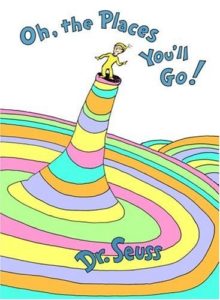Ageism in Corporate America - Can you teach an old dog new tricks?

Leave it to our mothers, to point out the obvious. When I recently informed my mom that I had been laid off, she gasped. I know she was trying to control her reaction, but she could not help pointing out that I wasn’t 30-years-old anymore, suggesting that finding a new, equal job as a female executive in her fifties, might be a challenge. This prompted me to dig a little deeper into the subject of ageism in Corporate America.
The Age Discrimination and Employment Act (ADEA) was passed in 1967, protecting individuals 40 years and older from discrimination in the workspace in hiring, promotions, wages, terminations and layoffs.
This raises the question – if the ADEA has been in effect for more than 50 years, why do we still have an issue with age discrimination? There have been various recent studies, publications and even movies on the subject.
The U.S. Equal Employment and Opportunity Commission (EEOC) published a special report in 2018 concluding “age discrimination remains a significant and costly problem for workers, their families and our economy.”
That same year, the American Association of Retired Persons commonly knows as the AARP, conducted a survey among their members, finding that :
- Nearly 1 in 4 workers age 45 and older have been subjected to negative comments
about their age from supervisors or coworkers
-
About 3 in 5 older workers have seen or experienced age discrimination in the
workplace
-
76 percent of these older workers see age discrimination as a hurdle to finding a new
job; another report found that more than half of these older workers are prematurely
pushed out of longtime jobs and 90 percent of them never earn as much again
I came across an article from the Undercover Recruiter comparing the differences in education, skills and attitude between generations X, Y, and Z. They concluded that 70% of businesses and recruiters believe that generation X workers (born between 1966 and 1977) are the best workers overall.
While ageism is no laughing matter, Hollywood addressed the topic in the 2015 Comedy “The Intern.” Robert De Niro plays a 70-year-old intern (!) for an online fashion site serving under a young, female CEO played by Ann Hathaway. Stereotypical thoughts regarding age are being addressed throughout this entertaining movie with the promotional tagline “Experience never gets old”.
Still, there are common trepidations about the older workforce when it comes to aptitude (can an old dog learn new tricks?) and attitude (does an old dog want to learn new tricks?). Many people believe that older employees are set in their ways and that they cannot keep up with current technologies. I have spent a lot of my career focusing on adult learning principles and creating curricula for adult learners. Clearly, older learners can pick up new skills as long as the learning modalities accommodate their needs.
Also, there is a major difference between our chronological age (number of years a person has been alive) vs. our biological age (how old a person seems). “50 is the new 40,” right? It is no longer unusual to live an active lifestyle at any age. For example, this year I competed in “The Battle of The Ages,” a fitness competition with teams of four athletes, one each in their 20s, 30s, 40s, and 50s, proving that you can compete at any age and that there is power in teaming up people from different generations as they each contribute different strengths to the game.
The movement against Ageism has yet to find its voice and lags behind other recent anti-discriminatory movements in the workforce like “Me too,” the ruling by the Supreme Court to protect the LGBT community and antiracism that have recently taken center stage.
Corporations and people managers will have to adapt and learn a new trick: Mixing teams with members of all ages and recognizing what each generation brings to the table. The key is to leverage the differences in each generation, their values and motivations. Having a perspective of four or even five different generations should make for a well-rounded end result and create a strong competitive advantage.
As far as this “old dog” is concerned, I intend to prove everyone wrong who still believes that old dogs cannot learn new tricks. I just enrolled in the iPEC Certification Program for Executive Coaching. Soon I will be teaching other dogs (figuratively speaking, of course) of all ages new tricks to advance their careers. It is time to embrace getting older, for it is a privilege not granted to everyone. And with that privilege, come immeasurable insights and valuable contributions.
If you feel like you could learn a few new tricks, contact me about one-on-one coaching.
Finding inspiration in times of uncertainty
Finding inspiration in times of uncertainty Image courtesy of “Oh,...
Read MoreA hairy question – can your hairstyle advance or hinder your career?
A hairy question – can your hairstyle advance or hinder...
Read MoreThe secret sauce to climbing the corporate ladder
The secret sauce to climbing the corporate ladder 12 lessons...
Read MoreAgeism in Corporate America – Can you teach an old dog new tricks?
Ageism in Corporate America – Can you teach an old...
Read More



